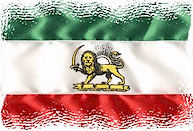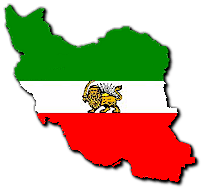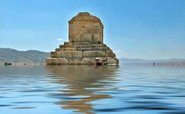INTRODUCTION: According to various texts, Iran possessed warships and the ships equipped with the weapons and materials used in war since the Achaemenid era (550-330 BC), and the evidences indicating the existence of those ships have been found in archeological investigations. It has been also documented that the Iranian Navy was very active during Achaemenid king Darius the Great (reigned 522-485 BC) and his son King Xerxes (in Persian: Khasha Yar Shah). During King Xerxes (reigned from 485-465 BC), for a short time the Iranian Navy was commanded by Artemis, a female admiral, around 480 BC. In this article, the name of Artemis, the life story of Artemis, her battles, her end, and a poetry referring to Artemis as the First Iranian Female Admiral will be studied and discussed.
 |
| Grand Admiral Artemisia, "Arteshbod Artemisia" |
HER LIFE: The exact birth-date and birthplace of Artemis are unknown. Since the reliable evidences indicate that she was appointed as the Iranian Admiral in 480 BC, she must have been 30-40 years old at the time. Therefore, her birth-date most likely could have been between 520-510 BC. It has been recorded that Artemis was from a noble family and she joined the Persian Army when she was very young.
HER BATTLES: Artemis participated in many battles, and in every battle she acted like a leader and her inspiring energy would quickly ignite the enthusiasms of other soldiers and officers. One of her famous battles was the Battle of Salamis, and here is the story of that battle: In 484 BC, Darius the Great left to his son Xerxes the task of capturing Athens (the capital and largest city of Greece). From 483 BC Xerxes prepared his expedition: A channel was dug through the isthmus (in Persian: Tanggeh) of the peninsula of Mount Athos, provisions were stored in the stations on the road through Thrace, and two bridges were thrown across the Hellespont. Soldiers of many nationalities served in the armies of Xerxes, including the Assyrians, Phoenicians, Babylonians, Indians, Egyptians, Jews and Arabs. Xerxes concluded an alliance with Carthage, and thus deprived Greece of the support of the powerful monarch of Syracuse. Xerxes set out in the spring of 480 BC from Sardis with a fleet and army which Herodotus claimed was more than two million strong with at least 10,000 elite warriors named Persian Immortals. The reliable evidences indicate that in fact a brave Iranian female named Artemis participated in the Battle of Salamis in September 480 BC as an Iranian Admiral commanding the Iranian warships. According to historical documents king Xerxes personally issued an official order and appointed Artemis as the Iranian Admiral. In the battle with the Greeks and on the point of being captured by enemy, Artemis managed to disappear from the scene in an unusual way and very professionally. Xerxes watching from a distant hill-side could see what happened and he was full of praise for Artemis's bravery. She then navigated back to the Iranian front, where, according to Herodotus, Xerxes declared "My men have turned into women and my women into men!" Shortly after, Athens was captured and the Athenians and Spartans were driven back to their last line of defense.
HER END: There is not much information on Artemis after the Battle of Salamis. Some documents indicate that at the end she was interested to marry king Xerxes to become a queen. That marriage, however, did not take place. It should be also noted that some researchers regrettably have mixed up the life story of Artemis with Artemisia.
 |
| "Sepahsalar of Iran" Grand Admiral Artemisia, Artemisia The First, of Halicarnassius, A Living Legend, The most amazing thing about this woman was her aggressiveness! Since the beginning, she knew what she wanted and she well planned it and she went after it, full speed. What could have stopped her? The woman fought like a man, had brains of a military genius, looks of a goddess, manners of an aristocrat and intellect of a wise-woman! |
REFERENCES:
Ariarman Website (2008): Online Article on Iranian Seafaring History (in Persian).
Iran Daily Website (2004): Online News on Archeologists Find Remains of Achaemenid Ship.
Saadat Noury, M. (2005): Online Article on the First Iranians who established the Iranian Army.
Saadat Noury, M. (2007): Various Online Articles on Persian History and First Iranians.
Saadat Noury, M. (2008): Online Note on Who Am I in the Chain of Poems.
Saadat Noury, M. (2008): Online Article on First Iranian Satraps.
Saadat Noury, M. (2008): Online Article on Anahita, the First Iranian Goddess of Productivity and Values.
Shahyad Net (2005): Online Article on the Imperial Iranian Navy.
Tajar, M. S. (2008): Online Note on Who Had the Greatest Empire.
Wikipedia Encyclopedia (2008): Online Articles on Anahita, Artemis, Isidore of Charax, History of the Iranian Navy, and King Xerxes.
Wikipedia Encyclopedia (2008): Online Articles on Artemis (in Persian).

























 اخبار مربوط به زندانیان سیاسی و نقض حقوق بشر
اخبار مربوط به زندانیان سیاسی و نقض حقوق بشر

















 Tulips in Holland
Tulips in Holland












No comments:
Post a Comment